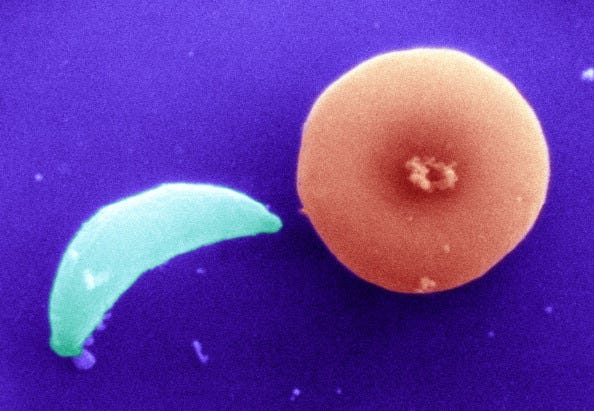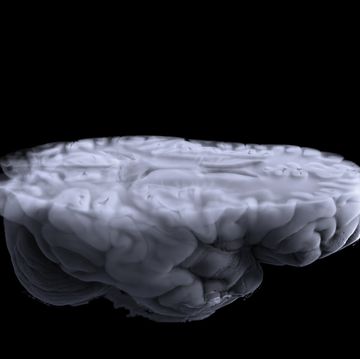Some of the most insidious and ancient threats to animals on Earth are parasites that hijack the bodies and brains of their hosts for their own nefarious ends. Now researchers are starting to gather clues about how this longstanding battle shaped some of the most basic functions of the animal brain.
Psychologist Marco Del Giudice, of the University of New Mexico, recently published a comprehensive review of the research into the war between parasites and their hosts. “I don't do empirical research with parasites,” Del Giudice explains to Popular Mechanics. “I was interested in the implications for psychology and neuroscience.”
Called “Invisible Designers: Brain Evolution Through the Lens Of Parasite Manipulation,” Del Giudice's review argues that relentless parasitic assault has likely shaped their hosts’ nervous and endocrine systems.
“Millions of years of attacks by manipulating organisms must have exerted a powerful selective pressure on brain evolution in animals,” he writes in the Quarterly Review of Biology, a peer-reviewed publication that’s been around since the 1920s.
This is what Del Giudice uncovered about the secret war that's been unfolding in our brains for millions of years.
Puppet Master Pathogens
It may seem impossible for something as simple as a unicellular organism to take control of a higher-order life form, but you can spot the phenomenon frequently in nature. Rats have an innate, instinctive reaction to the odor of a feline that says, “stay away.” This makes basic evolutionary sense, but a rat infected with the one-cell parasite Toxoplasma gondii doesn’t act that way.
The parasite has a goal—gain access to where it thrives, otherwise called the “definitive host.” In this case, it wants to build a home inside a cat.
Rats infected with Toxoplasma gondii lose their aversion to the scent of cats, greatly improving the odds that they will be killed and the parasite will migrate. Some researchers have seen that the rats even become attracted to the scent and hasten their doom (to the parasite’s advantage).
But how are these parasites able to do this? It’s not intelligent thought and it’s not magic— It’s chemistry. The brain’s neurons communicate via chemical signals, so it’s imperative for parasites to insert themselves into that process. That means sneaking compounds into the brain, one way or another.
“Parasites can penetrate inside the brain and attack it from within or secrete neuroactive compounds that will reach the brain through circulation,” says Del Giudice. “In both cases, they need to get past the blood-brain interface and its defenses.”
When a frontal assault fails, a parasite may take an indirect route to send its own self-serving chemical signals into a brain. The body and brain swap information via the chemicals released by endocrine organs like the thyroid and gonads, as well as parts of the immune system. A parasite may lodge itself inside an organ or manipulate it from the outside. “The hormones produced by these organs modulate brain function and can powerfully affect behavior,” Del Giudice says.
That puts the entire central nervous system—not just the brain itself—on the frontline. “Endocrine systems are not just a potential target for hijacking,” Del Giudice says. “Parasites can eavesdrop on the host’s hormonal signals to gain precious information about the state of the organism and respond adaptively.”
There are plenty other dramatic examples of animals being puppeteered by manipulative parasites. Ants infected by a roundworm called Myrmeconema neotropicumturns turn from black to red and strike suicidal berry poses that attract hungry birds, the worm’s definitive host. Some sick fish lose motor coordination and become easier prey, spreading the parasites. Rabid animals resist water, froth at the mouth, and become aggressive, the perfect conditions for a saliva-bourn pathogen to spread.
“Many sexually transmitted microbes regulate their growth in response to sex hormone levels,” he notes.
In other words, the parasites marshal their forces and get ready to strike when the reproductive irons are hot. It’s a level of sophistication that you might not expect from a microorganism.
Battles on the Blood Brain Barrier
Parasites have been trying to hijack animals for a long time—and that’s actually a good thing.
“Fossilized ants show that present-day manipulation strategies by fungi and helminths [worms] were already well established around 30 to 50 million years ago, suggesting that they originated much earlier,” Del Giudice says.
Luckily for animal life, long centuries of exposure to hostile parasites has led to defenses that makes brains harder to hijack. Del Giudice says that there could be many more of these polymorphic matchups locked into our DNA but infused into our programming before humans even evolved, in some cases “possibly in the early stages of brain evolution.”
The presence of parasites in such deep parts of pre-history, shaping the animal genome at its most basic level, is why Del Giudice feels they could be forgotten drivers of early, fundamental evolution.
“Many aspects of neurobiology are destined to remain mysterious or poorly understood until parasites—the brain’s invisible designers—are finally included in the picture,” he writes.
Recent research indicates that this fight is being waged inside human beings. One of the newest insights into this shadowy fight is Wolfgang Zimmerman’s Evolution: Decoy Receptors as Unique Weapons to Fight Pathogens which published in December 2018. The paper describes a duel between bacteria and the human brain for control of the immune system.
Zimmerman studied molecules called CEACAMs, receptors with the main function of gaining entry to the brain to prompt inhibitory immune system responses. Some bacteria release mimic compounds that appears to be CEACAMs, imposters cross the blood-brain barrier and hack the immune system to thwart a response.
But the human body is not defenseless. Zimmerman’s paper examines the body’s production of decoy CEACAMs that specifically attract the fake, parasitical molecules. These are marked for targeting and destruction.
The discovery of these decoys “points to an evolutionary process that allows the host to catch up with pathogens,” according to Zimmerman. As a sign of how intense this invisible battle has become, the decoy, called CEACAM3, is one of the fastest-evolving genes in the human genome.
A Modern Battlefield
The influence of parasites on evolution — the results of millennia of biochemical conflict — could have modern implications. Knowing how to help the body defend against parasites is only one part of the equation. Just like the parasites, humans are trying to hack the human brain.
Knowing how to shuttle chemicals across the blood-brain barrier is critical in developing drug treatments for mood disorders. “If the human brain contains evolved countermeasures to manipulation,” writes Del Giudice, “The implications for psychopharmacology could be profound…standard pharmacological treatments may unwittingly mimic a parasite attack and trigger specialized defensive responses."
Another lesson parasites can teach us comes from a ghastly parasitic example where wasps chemically groom cockroaches to be their victims.
The wasp has no lessons to teach when it comes to crossing the blood-brain barrier; it simply injects a chemical cocktail directly into the head of a cockroach, pumping the insect’s ganglia with a mix of dopamine, octopamine, opioid receptors.
Under the influence, the cockroach compulsively cleans itself for a half hour as the wasp prepares a nest. The wasp returns to find an exhausted roach, mutilates its antenna, and leads it back to the nest, where the cockroach then sits still as the wasp lays its born-voracious larva inside its body.
This vivid and disturbing example points to the effectiveness of parasites that don’t rely on just one chemical to gain access to the animal brain. Successful parasites tend to gain access by using several chemical pathways, instead of specializing in just one.
There is also a tendency to stagger the attacks, preparing for the major intrusion with a chemical barrage that sets the field to their advantage. Like artillery battering defenses on a military battlefield, some parasites spur the host’s production of dopamine that interferes with defensive reaction, before releasing the intruding chemicals meant to infiltrate the brain or nervous system organ.
If this is a good strategy for the parasites, it could work for humans, too. Neuroscientists looking for tips into influencing brains find that using a variety of molecules along multiple pathways also works to get beneficial drugs into the brain. It could explain why some seemingly random chemicals seem to help treat brain afflictions. For example, the ongoing question into why anti-inflammatory drugs seem to ease to symptoms of depression.
There is no centralized research effort seeking the big picture truths of parasites and evolution. As the use of genetic manipulation increases in labs, there may be more opportunities to study these ancient feuds and benefit from their legacies.
“There is relatively little dialogue between neuroscience and evolutionary biology, and parasitology itself is a fairly specialized subfield of biology,” Del Giudice says, hoping his conclusions can help bridge the gap. “That's why I hope specialists in the various disciplines involved will discuss them, criticize them, and with some luck find interesting applications.”
Joe Pappalardo is a contributing writer at Popular Mechanics and author of the new book, Spaceport Earth: The Reinvention of Spaceflight.















